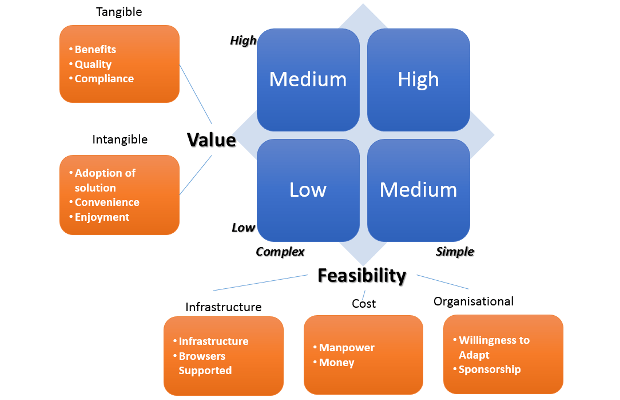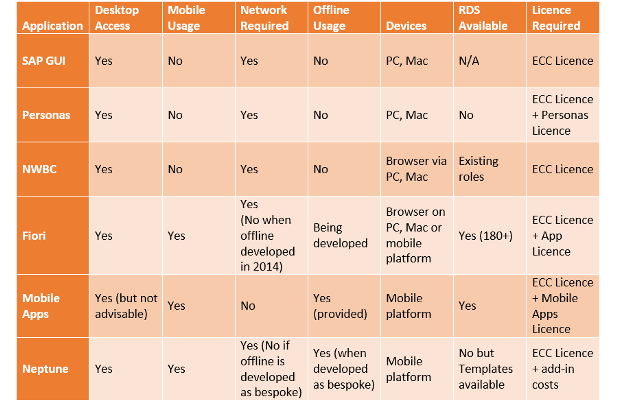
In our recent blogs:Ā SAP Screen Personas; The new look for the new eraĀ andĀ SAP Work Manager: Introduction; we described the tools which can be used to enhance SAP User Experience. I have described how SAP Screen Personas can help the user and my colleague Craig is running a series on how SAP Work Manager can provide benefits to the company.
However, if the technology is used for the wrong purpose it is of no value to the user and more critically the business. In this blog I will highlight the key areas to invest time before deciding on your UX Strategy.
The Four Steps to Heaven
There are four key steps to take when creating a UX Strategy:

“What?”
What Use Cases need to be included in the UX Strategy?
The use cases you determine would be a process within SAP where you believe that a particular solution, in this case an improved user experience, would provide value/ benefit.
An example of this could be the Plant Maintenance Operator who carries a folder full of Work Orders printed on paper around the plant. The Operator diligently makes notes on each order and if there is a malfunction at one of the stations he writes a notification which is entered into SAP with the rest of his notes when he returns to the office.
You must have heard the operators expressing their pain inĀ āOh, these screens are too complicated ā it takes too long – Iāll do it tomorrow! āĀ orĀ āI lost the paperwork!!ā. Lost opportunities, higher maintenance cost.
These are the pain points which need to be addressed. Analyse the value and feasibility of these use cases and draw up a complexity matrix, such as the one outlined below, to help you home in on the ones which have the higher business value. Remember, implementing change is difficult and itās best to surface potential constraints as well as the value before embarking on an implementation. So the message is –Ā Analyse before you personalise.

“Why?”
Using the Complexity Matrix helps to clarify another key step in the UX journey – why are we doing this? The matrix drives you towards a cost/ benefit analysis on each of the use cases to determine which ones are of the highest value to the business. This will help ensure that you are selecting the right use cases to spend time and money on.
“How?”
How is the fun part. This is where the team goes through the ideas, do the prototype and testing for solutions relating to each Use Case. This is where it is proven that the technology chosen is āfit for purposeā. There are a number of possible tools which can be used and one method of judging which is the most relevant for a particular Use Case is to draw up a quick guide of the tools against the key requirements.

“When?”
When is the final step of planning the way forward. Prioritising the Use Cases and documenting the solutions proposed in the How stage. From this a UX Strategy is born.
By following these steps before letting technology run the project the chances of a successful UX Strategy is much higher ensuring that users have the look, feel and usability they enjoy and, just as important, the business gains from the new user experience.










